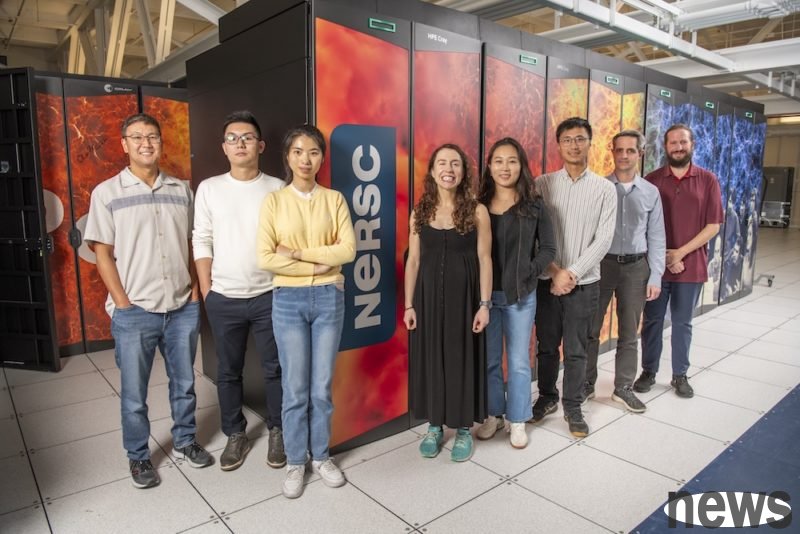On November 14, Zhi Jackie Yao and Andy Nonaka, researchers at the Quantum Systems Accelerator (QSA) at Lawrence Berkeley National Laboratory (LBNL), used its supercomputer Perlmutter to conduct an unprecedented quantum chip simulation. This simulat...

On November 14, Zhi Jackie Yao and Andy Nonaka, researchers at the Quantum Systems Accelerator (QSA) at Lawrence Berkeley National Laboratory (LBNL), used its supercomputer Perlmutter to conduct an unprecedented quantum chip simulation. This simulation not only helps researchers understand the functionality and performance of the wafers before they are manufactured, but also identifies potential problems early. Key to this research is developing electromagnetic models to simulate the behavior of quantum wafers, an important step in improving the performance of quantum hardware.
The team members for this simulation include Andy Nonaka (research scientist), Yingheng Tang (postdoctoral researcher), Candice Kang (graduate student at the University of California), Katherine Klymko (NERSC computing systems engineer), Kan-Heng Lee (research scientist), Christopher Spitzer (program manager), and Johannes Blaschke (NERSC high-performance computing workflow performance expert).
Nonaka said: "Our computational model predicts how design decisions affect electromagnetic wave propagation in the wafer to ensure correct signal coupling and avoid unnecessary crosstalk." They used the supercomputing tool ARTEMIS, a software platform dedicated to full-wave electromagnetic simulation, to simulate and optimize the wafer designed in collaboration with Irfan Siddiqi's Quantum Nanoelectronics Laboratory at the University of California, Berkeley, and the Berkeley Laboratory's Advanced Quantum Test Platform (AQT).
What is unique about this simulation is its detailed computing power. The research team used almost all 7,168 of Perlmutter's NVIDIA (NVIDIA) GPUs and captured the structure and function of a multi-layer wafer that is only 10 square millimeters and 0.3 millimeters thick in 24 hours. "We discretized the wafer into 11 billion grid cells and ran over a million time steps in seven hours, allowing us to evaluate three circuit configurations in one day," Nonaka said.
Yao added: "We perform full-wave physics-level simulations, which means we care about the materials used on the wafer, the layout of the wafer, how the metal is wired, and the size, shape and materials of the resonator." This attention to physical details allows the simulation to realistically reflect how qubits in the laboratory communicate with each other and interact with other parts of the quantum circuit.
Next, the research team plans to conduct more simulations to enhance a quantitative understanding of the chip design and observe its functionality in larger systems. "We wanted to do more quantitative simulations so we could post-process and quantify the spectral behavior of the system," Yao said.
The success of this simulation is due to the strong cooperation of the Berkeley community, from AMCR to QSA, AQT to NERSC, which not only provides computing power but also expertise. QSA Director Bert de Jong said: "This unprecedented simulation is an important step in accelerating the design and development of quantum hardware, which will unlock new capabilities for researchers and open new avenues of science."
Berkeley Lab: Unprecedented Perlmutter Simulation Details Quantum Chip